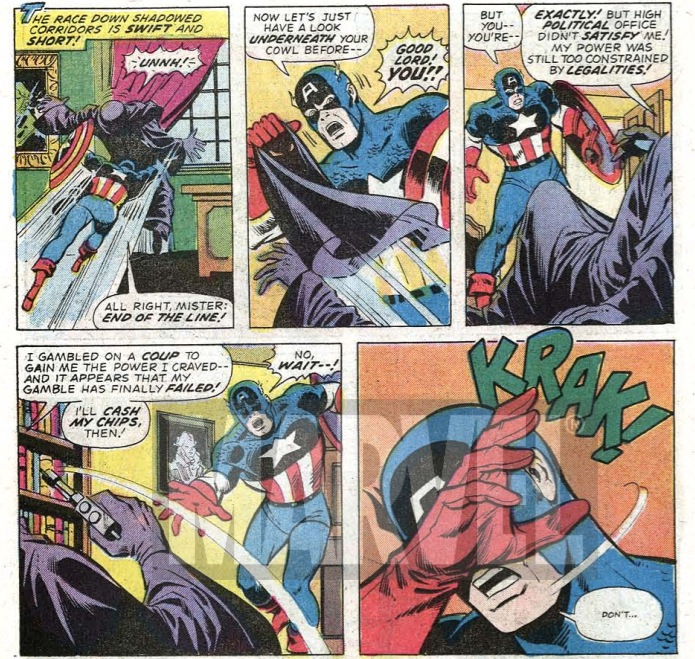A few years back, Marvel decided that by renumbering a book they were trying to revamp, they could draw in a lot of new readers who reflexively buy the first issues of "important" comics, while making a symbolic break from weaker stories of the past.
Captain America did this more often than any other ongoing Marvel series, I think. A dramatically revamped volume 2 was launched in 1996, and when it didn't take hold with buyers the previous status quo was restored with a new volume 3 in 1997. When new editor Joe Quesada tried to make
Captain America more modern and relevant, the series was relaunched in 2002 with volume 4. That didn't work out so well, so in 2004 Volume 5 was launched with writer Ed Brubaker offering an
extremely successful combination of classic characters and modern storytelling.
Relaunching the series with volume 5 garnered a certain amount of online derision when it was announced, and I was certainly one of the folks who wondered if Marvel's renumbering had gotten a bit out of hand. Now that I'm actually
reading volume 4, I better understand why Marvel wanted to put volume 4 behind it.
Volume 4 started out fairly promising. ... a good script by John Ney Rieber grounded in the real world, and strong art by John Cassaday. It would have made a great graphic novel.
But Rieber's "all symbolism, all of the time" approach to Captain America likely wouldn't have worked for long. The comic tends to work best when it remembers that there's an actual human being under that mask, with very human concerns. Sure, Rieber's Cap was out of costume a lot, but he was still "Captain America" full time. Instead of working as an artist, Steve Rogers now worked at a New York dock, likely for no reason other than it sounded more "American". Editor Joe Quesada began asking Rieber for more and more rewrites, and eventually it became clear that Reiber wasn't delivering what Marvel wanted, and
he left the book. Chuck Austen was given the unenviable task of finishing two Reiber stories that were already partly written and illustrated.
It's not fair to judge Austen's work entirely on the basis of stories that he didn't start. Reading them for the first time though, it felt to me like Austen was focused more on introducing plot twists than he was on delivering a strong story. Austen also introduced the dreadful idea that Cap was
put into suspended animation by his own government, because they feared he would oppose dropping the bomb on Japan (an idea that I believe has since been rightly ignored).
After Austen left, Dave Gibbons wrote what is essentially a four part imaginary story (issues 17-20), in which Cap is unfrozen in 1964, the Nazis rule the world, and Cap must team up with a resistance populated with non-powered versions of Marvel's most popular heroes.
Robert Morales tried to salvage the series, restoring the classic action scenes and Cap's social life, while having him interact with real world elements like Guantanamo Bay. I thought he did a decent job, though he was undermined by Chris Bachalo's art, which gave cap a pointy nose like Batman. Morale's run only ran eight issues though, and by the end he clearly knew the writing was on the wall. The series then concluded with an enjoyable 4 part story by Robert Kirkman that was good clean superheroes vs. supervillains fun.
In general,
Captain America volume 4 can be ignored, or regarded as a series of alternate universe stories. Little of it is canon. By the end of Morales' run, Cap has restored the twin towers! Austen's suggestion that the government froze Captain America is unlikely to be referenced again, in part because it hinges on Cap's refusal to kill during WWII, a notion that's since been disavowed. (It also seems to contradict
Captain America 220. And... oh yeah... it's also really really stupid.) Only the first story by Rieber and the final story by Kirkman are unlikely to be completely disregarded.
Why did I learn from reading
Captain America volume 4? That keeping Captain America fresh and relevant in the 21st century is hard. He is, under any circumstances, a difficult character to make work. The character does work best though when the symbolism isn't front and center. Captain America the Super Solider is an exciting character. Captain America the Human Flag doesn't work so well.











